|
|
What does "Expressive and not excessive" really mean?
Why have I selected such a plain image for my Design Philosophy page?
I arranged examples of my work into three groups to make it clearer what I consider to be representative of my work. It is not a place to discuss why I organized those groups and
there should be no implication that any group is more important than the others. In fact, I see less and less difference between them with my personal development as a designer (again, not at a moment to ellaborate on this) but it is
convenient to use those groups to answer the questions posted above.
Those groups are:

Group 1, Something special, really unusual and theatrical
When people see those things, they immediately recognize that the costumes do not belong to everyday life (with possible exceptions of Halloween or extravagant costumes of a pop star). I have done a lot of them, and here are a few.
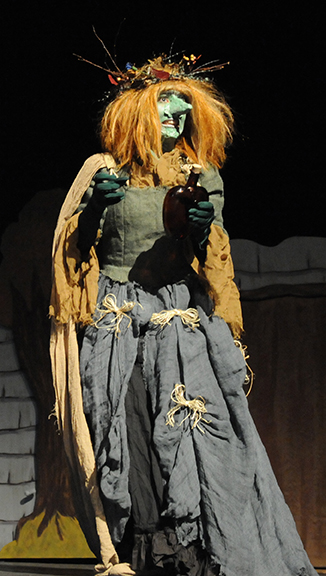
Witches of Killingworth
|
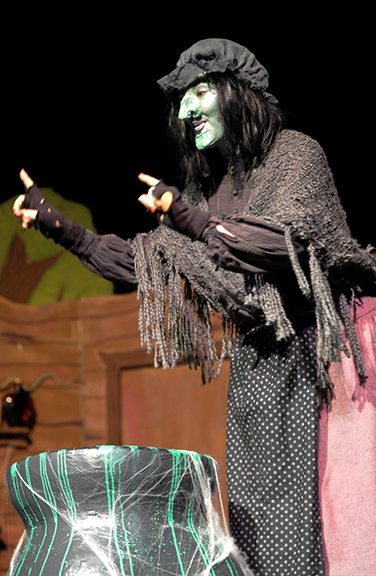
Witches of Killingworth
|
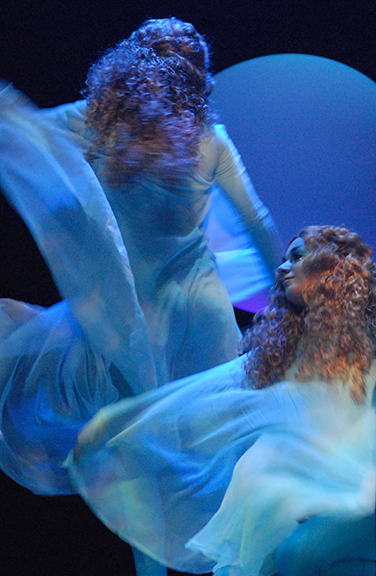
Ondine, The droplets
|
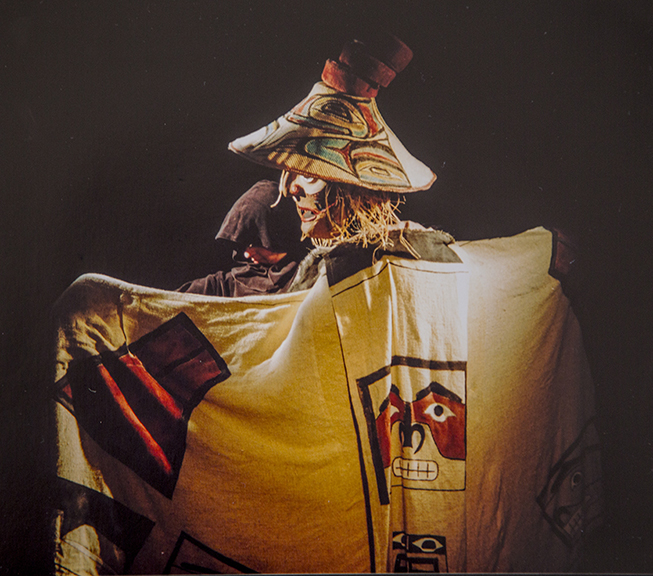
Tales of Raven
|
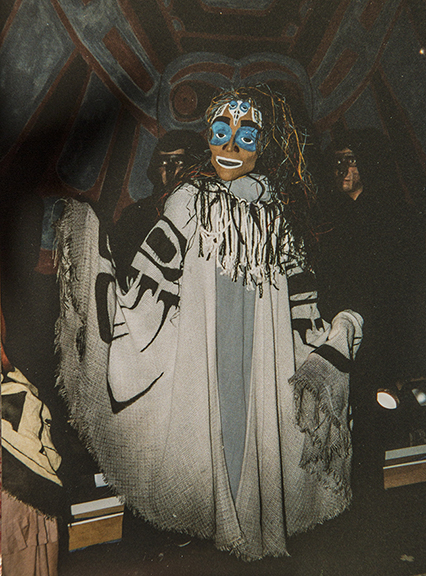
Tales of Raven
|

Fantastics
|
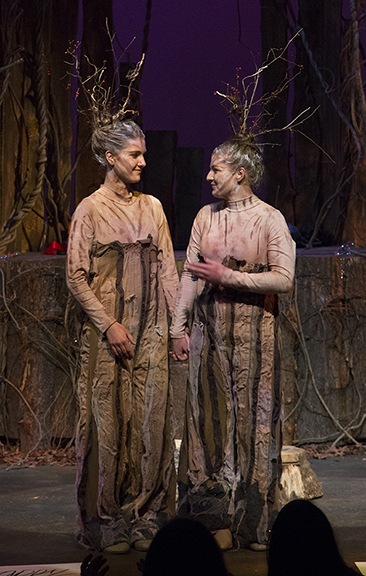
Fantastics
|

Skin of our teeth
|

Group 2, Not very special but with theatrical elements
While lacking clearly-outside-of-everyday-life property, those designs have special elements that belong mostly to theater world. They serve particular goals, and I will provide several examples with short explanations.
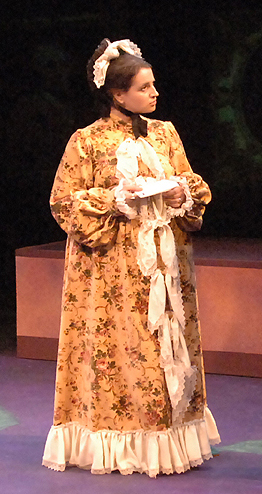
On the Razzle
Miss Blumenblatt from was very melodramatic, always reminisced about her past with a tear in her eyes. I designed and made her dress from an upholstery fabric that resembled an old couch with a lot of frills and embellishments. The latter were actually handkerchiefs that she was pulling out one by one during the performance to wipe off her tears.
|

Thieves' Carnival, same actor
The play demanded very quick costume changes; costume change was also a gender change since the characters were hiding as women. This was achieves with extensive use of body shapers, wigs, chignon and facial hair.
|
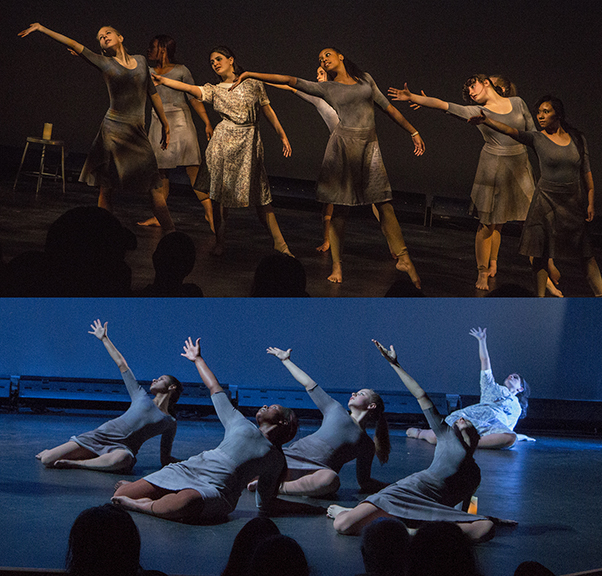
Diary of Anne Frank
The ensemble played different roles during this dance performance and the patterns on the costumes disappeared under specially designed lighting in the later part of the show
|

Quinn Patterson
The scar was supposed to be very old, caused by a deep wound from WWII.
|
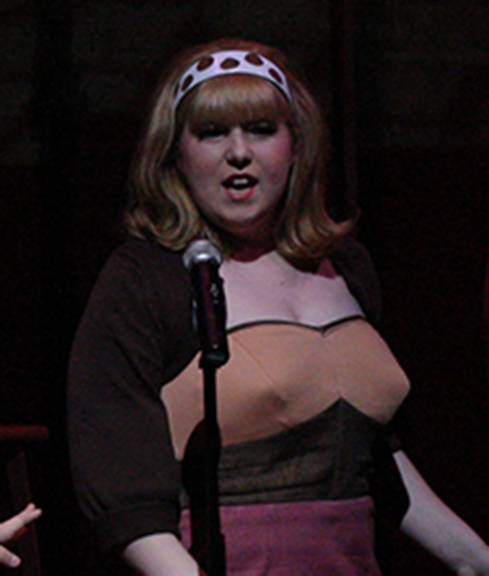
Little Shop of Horrors
The play was envisioned in the style of comic strips, very contoured, simplified, and very fifties. Hence very pointed bra.
| 
Group 3, Something benign, that "everyone can do"
I believe the simplest solutions are the hardest to achieve in theater costume design. Oklahoma is one of my favorite designs. The show is based on historical events,
so the costumes were supposed to be very authentic." Oklahoma is about American Frontier, about simple, good people living a low-key life with big dreams for the better future. This was the essence of our vision of Oklahoma. Simple, good people living a low-key life with big dreams.
Please take a quiz below. I created it to illustrate my strive for the essence and not to be critical of other designers (because in the first place I do not know how the other productions were envisioned). The same musical, the same scene. Which one reflects our vision of Oklahoma, the most? I selected images only from productions that received great reviews. Can you guess which design was mine? Clicking on the image will either take you to the source of my information, or to my image again.

|
"Simple, good people living a low-key life with big dreams for a better future"
Which image fits this description the most?
|
|

|
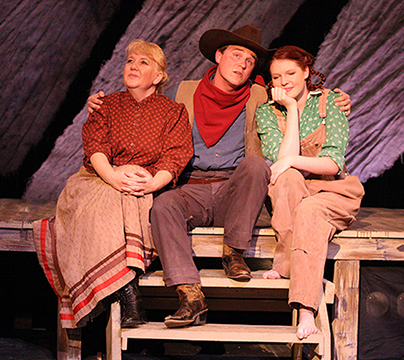

|
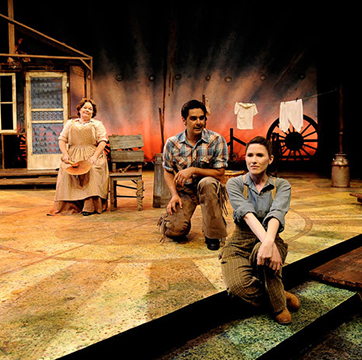
| |
The design is usually based on research and character traits but it is also important who the actor would be. We can change hair style, body shape, makeup, etc. but there are limits to how far we can move away from how people move and look, and their body types dictate personal choices in everyday life and cannot be ignored on stage. My timeframe for making costumes for Stand by Your Man was limited by two weeks. I selected several dresses for Tammy, the main character, in advance, being particularly excited about one of them. Nevertheless, I was not sure how this dress would look on Katie Barton, who was to play Tammy, and scheduled a fitting appointment before those two assigned weeks to meet Katie in NYC and tried the dresses on. Long story made short, none of preselected dresses could work and I had to start from scratch. I tried to achieve a situation when a dress that I, as a designer, select for Tammy, a stage persona, would be the dress that Katie Barton, an actress playing Tammy, would be comfortable wearing in personal life. I have to stress that I never delegate decisions of what to wear on stage to actors; I am just striving for a natural fit and am proud that many of the actors requested to keep the costumes after my shows.
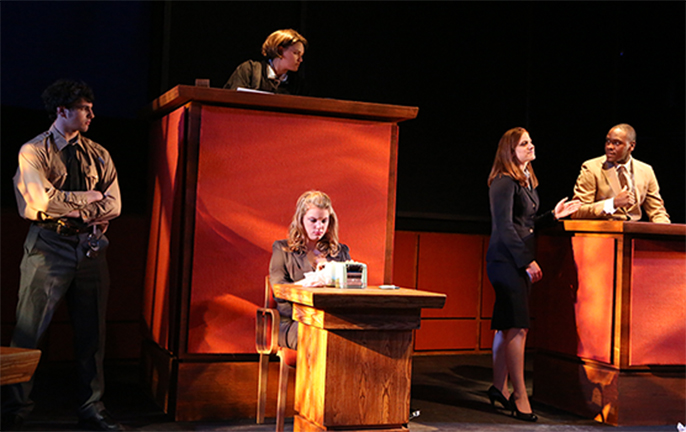
The Last Days of Judas Iscariot
Pontius Pilate: I am not responsible |
The Last Days of Judas Iscariot was envisioned as a contemporary drama. Very different historical and fictional characters discussed their opinions about Judas Iscariot. The photo shows the scene when Pontius Pilate testified on the issue. Pontius Pilate is portrayed as a very successful person, and the whole court scene is so natural that it is essentially drama-less. It has a totally business-like atmosphere, they could have been arguing about zoning dispute. In this particular case, the scene with Pontius Pilate, the most important thing was not what was present but what was absent. The costumes lack anything personal to them and it is a total contrast with the very core questions of the play, about human relationships, betrayal, loyalty, principles, devotion and sacrifice. The reddish tone of the scene fully stresses its heartless nature.
|

